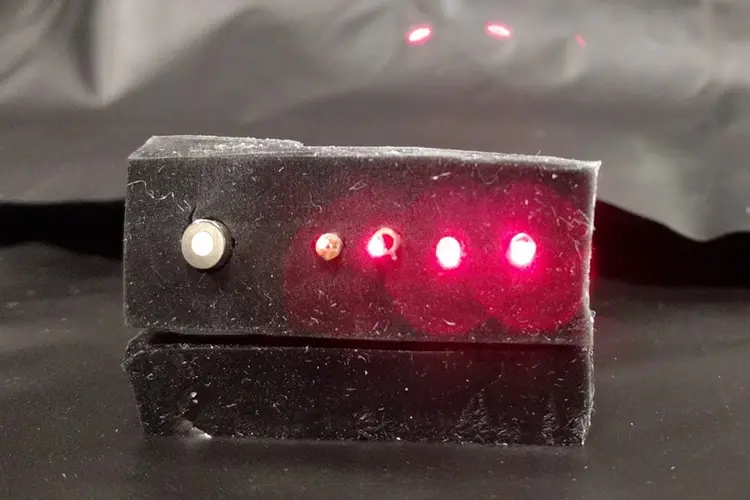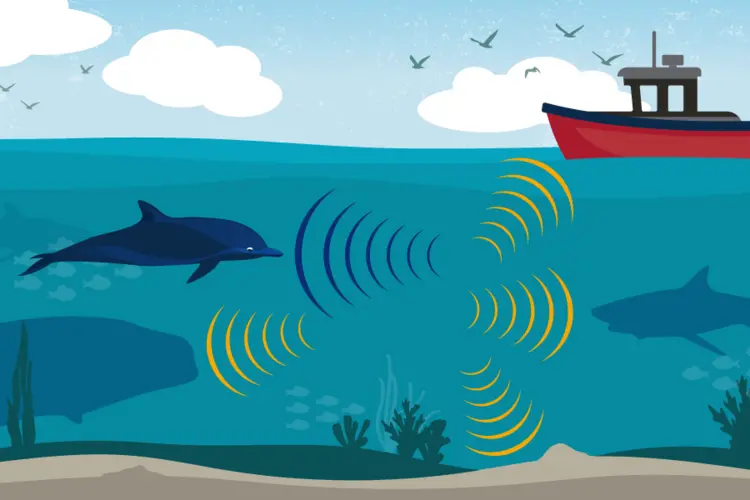
Better Than a Hole in the Head
Media Inquiries
Just as blood pressure informs heart health, intracranial pressure (ICP) helps indicate brain health. ICP sensing is the burgeoning focus of Jana Kainerstorfer(opens in new window)'s biomedical optics lab at Carnegie Mellon University. Her team is working to modernize ICP sensing approaches, which historically have been invasive and risky. Their noninvasive alternatives will ease risk of infection, pain and medical expenses, as well as present new monitoring capabilities for patients with an array of brain injuries and conditions, from stroke to hydrocephalus.
Investigating pressure levels in the brain is a laborious task for health professionals and hasn't progressed much since the 1960s. Current practice involves drilling a hole into a patient's skull and placing a probe inside for continuous monitoring of ICP levels. It comes with the risk of infection and damaging the brain itself, and while valuable data to have, ICP measurement is reserved only for the most critical of situations.
"At the core of it, what we've done is build a sensor alternative that doesn't require drilling a hole into the patient's head," said Kainerstorfer, an associate professor of biomedical engineering. "We recently published two papers that explore the use of optical sensors on the forehead for noninvasive ICP monitoring, using near-infrared spectroscopy and diffuse correlation spectroscopy. Both approaches represent huge strides in improving the patient experience and providing better tools to monitor pressure levels in the brain, which can be a key variable in both diagnosis and treatment decisions."
The first body of work, in collaboration with Matthew Smith(opens in new window), an associate professor of biomedical engineering(opens in new window) at CMU, was recently published in Neurophotonics(opens in new window), and demonstrates that noninvasive near-infrared spectroscopy can be used for ICP monitoring. The process involves small, customized sensors that are placed on the head — like a Fitbit for the brain — to measure light that has interacted with the brain. Every time the heart beats, it produces a pulse in the brain, and the sensors measure hemodynamic blood volume/blood flow changes. Then, a machine learning algorithm is applied to determine ICP.
"Our aim is to create a portable and user-friendly tool to measure pressure changes in the brain," explained Kainerstorfer. "We don't believe that fancy hardware is needed to measure blood flow or hemoglobin concentration, and right now, we don't have a good handle on how much brain pressure even fluctuates. There are other noninvasive methods that are out there, but what sets us apart is that we're using a sensor that can be made wearable and offers continuous monitoring."
Kainerstorfer's group also partnered with UPMC Children's Hospital of Pittsburgh, in collaboration with Dr. Michael McDowell, to conduct a clinical study utilizing more specialized sensors and hardware to measure ICP, via noninvasive diffuse correlation spectroscopy. Fifteen patients from UPMC's pediatric intensive care unit (ICU) participated, and their results were published in the Journal of Neurosurgery(opens in new window).
As part of the study, a probe with optic fibers was placed on the forehead of the pediatric patients who already had invasive ICP monitors to measure blood flow changes and quantify ICP and to compare the noninvasively acquired data to the invasively acquired data. The results of the noninvasive model were compared with those of invasive monitoring and found to be very similar.
"In this study, the patients had an invasive sensor placed in their brain, and it served as our ground truth," elaborated Kainerstorfer. "We worked alongside outstanding collaborators and were encouraged by the results we saw, which indicated that a noninvasive approach could yield accurate ICP measurement. It still requires very specialized hardware and expertise to interpret the data, but it's much better than drilling a hole in the head."
Noninvasive intracranial pressure sensing stands to benefit a wide range of people, from critical care and emergency medicine physicians to parents of children with conditions like hydrocephalus.
Hydrocephalus is a condition caused by too much brain fluid in the head, which causes pressure on the brain. To account for this, surgeons implant a shunt to drain the fluid; however, a reliable tool to noninvasively measure shunt function does not exist.
"Imagine a 6-year-old who was born with hydrocephalus travels to Walt Disney World Resort with her family," related Kainerstorfer. "If during their trip, she starts to exhibit symptoms of shunt failure, like headaches or drowsiness, the family currently has no way to quickly measure ICP, to see if it has increased. The only solution is to run to the ER and get CT/MRI testing and incur expensive medical bills. Many families live in a constant state of fear regarding shunt failure and being too far from a hospital capable of fixing the problem. Further, even if such a hospital is available, it often does not have access to the past medical records necessary to compare to, making diagnosis of shunt failure more difficult. Our work suggests there is a better way — a user-friendly portable sensor that can accurately measure ICP."
Next steps with the work include plans for a larger, multi-center clinical study of adult and pediatric patients.
"ICP sensing was a side project for our lab initially," said Kainerstorfer. "I come from an understanding of what influences blood flow, and how those changes influence neurons. My interest in this topic was piqued from an engineering challenge perspective, but also a personal empathy for patients who live with this uncertainty and don't have any noninvasive way of evaluating brain pressure changes. Trying to make someone's life better by an engineering approach is why I'm in this field."
— Related Content —

Wearable Tech Aids Freedivers, Cardiac Patients

